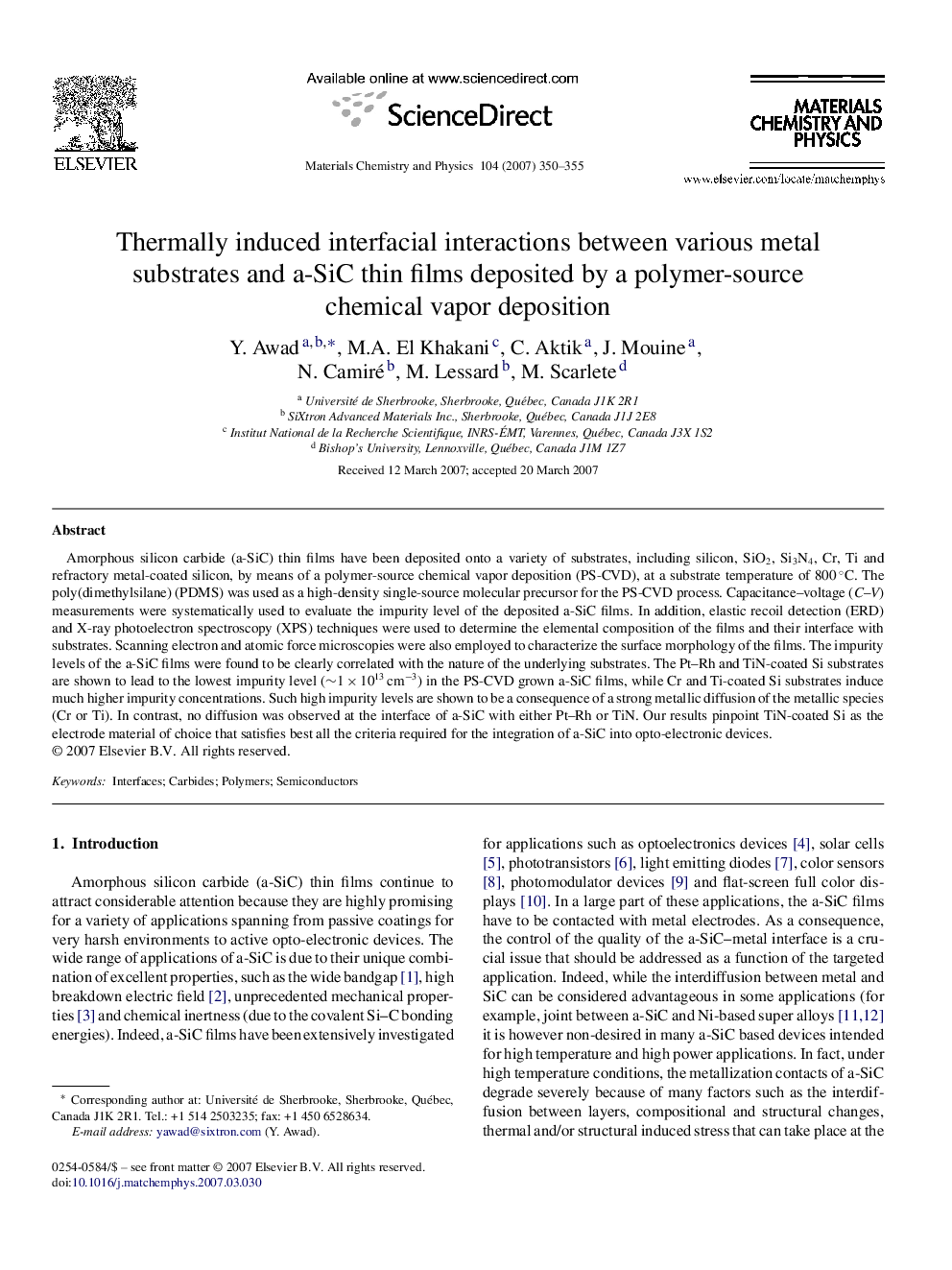| Article ID | Journal | Published Year | Pages | File Type |
|---|---|---|---|---|
| 1527284 | Materials Chemistry and Physics | 2007 | 6 Pages |
Amorphous silicon carbide (a-SiC) thin films have been deposited onto a variety of substrates, including silicon, SiO2, Si3N4, Cr, Ti and refractory metal-coated silicon, by means of a polymer-source chemical vapor deposition (PS-CVD), at a substrate temperature of 800 °C. The poly(dimethylsilane) (PDMS) was used as a high-density single-source molecular precursor for the PS-CVD process. Capacitance–voltage (C–V) measurements were systematically used to evaluate the impurity level of the deposited a-SiC films. In addition, elastic recoil detection (ERD) and X-ray photoelectron spectroscopy (XPS) techniques were used to determine the elemental composition of the films and their interface with substrates. Scanning electron and atomic force microscopies were also employed to characterize the surface morphology of the films. The impurity levels of the a-SiC films were found to be clearly correlated with the nature of the underlying substrates. The Pt–Rh and TiN-coated Si substrates are shown to lead to the lowest impurity level (∼1 × 1013 cm−3) in the PS-CVD grown a-SiC films, while Cr and Ti-coated Si substrates induce much higher impurity concentrations. Such high impurity levels are shown to be a consequence of a strong metallic diffusion of the metallic species (Cr or Ti). In contrast, no diffusion was observed at the interface of a-SiC with either Pt–Rh or TiN. Our results pinpoint TiN-coated Si as the electrode material of choice that satisfies best all the criteria required for the integration of a-SiC into opto-electronic devices.
